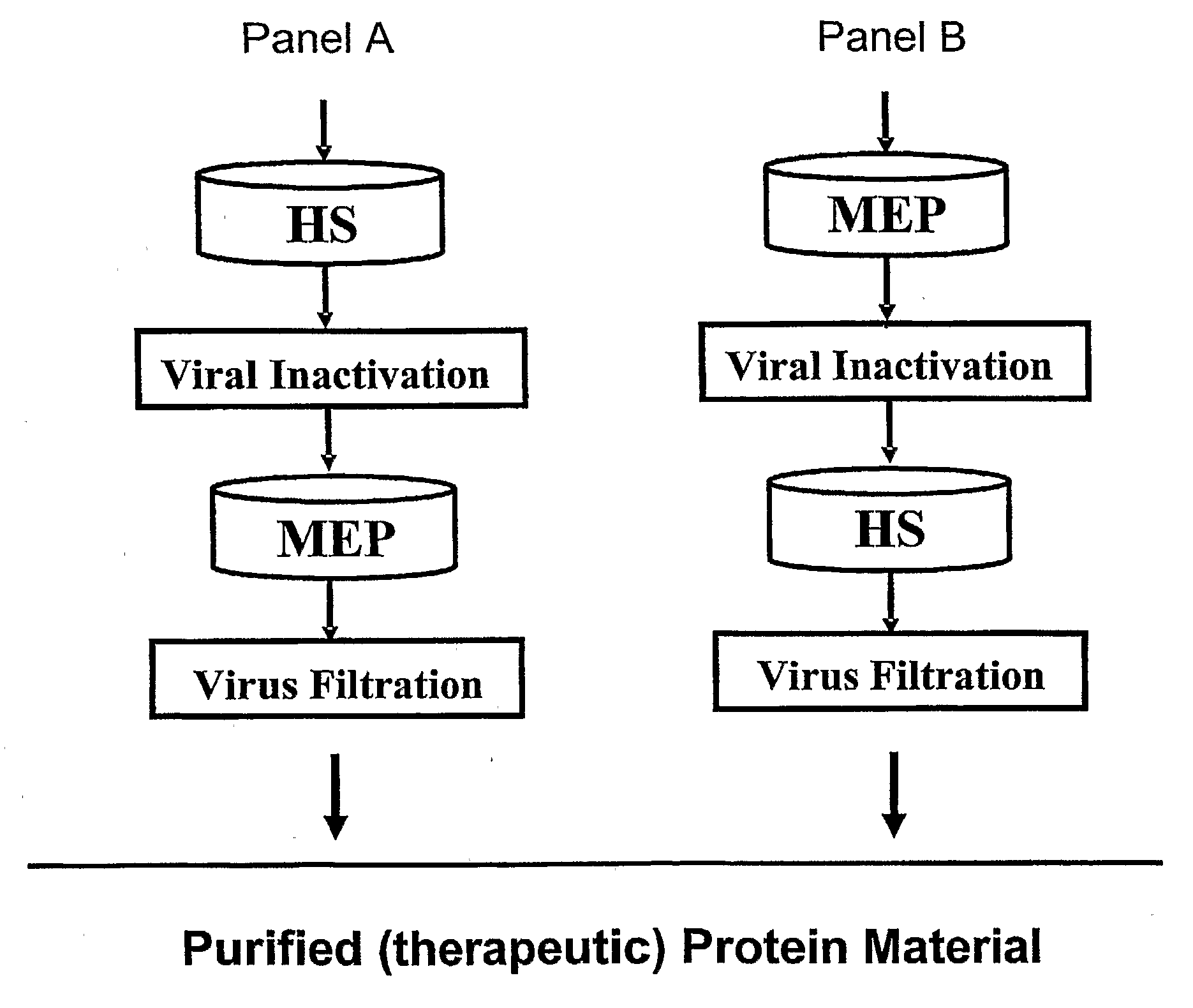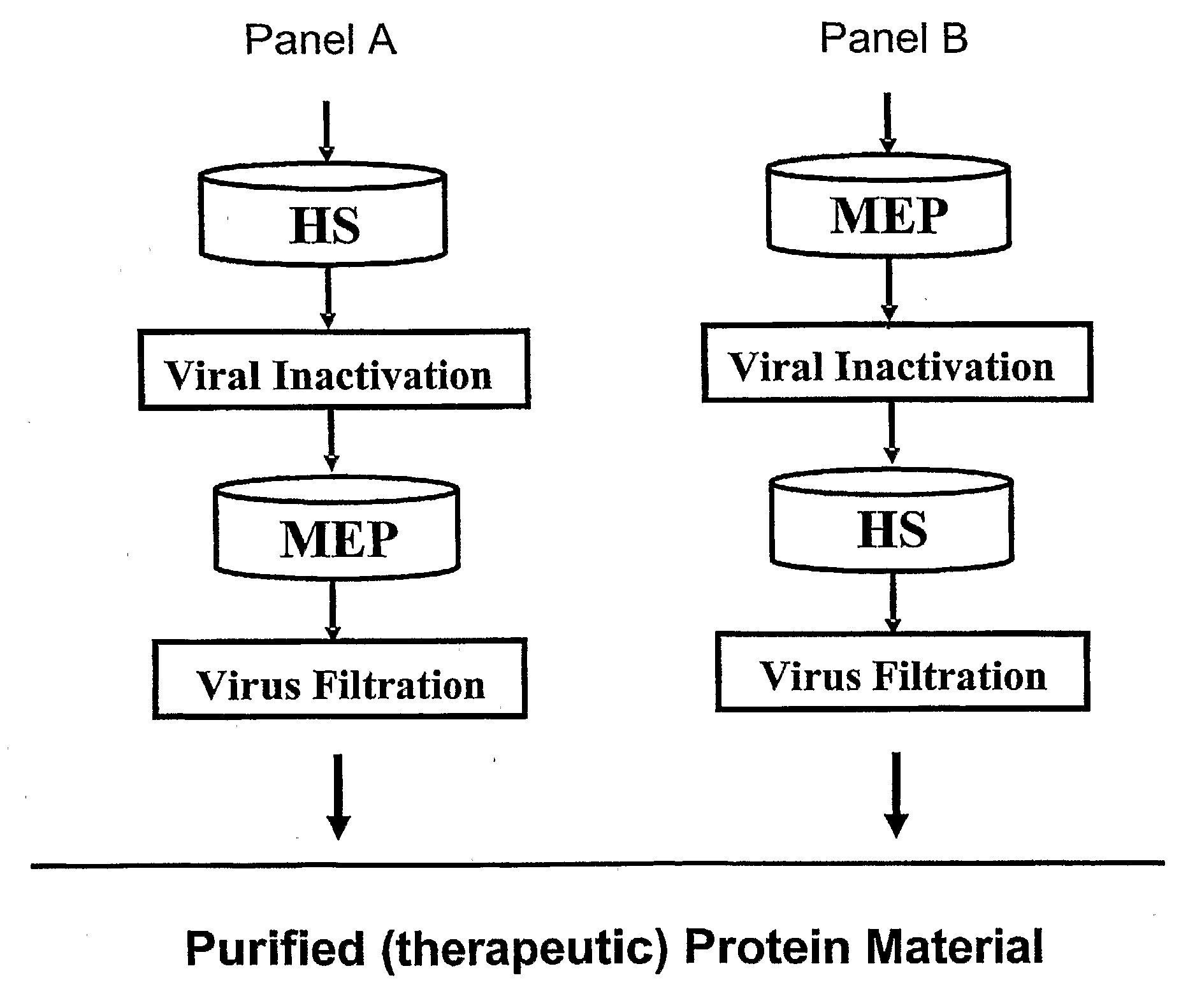Protein Purification Using HCIC and Ion Exchange Chromatography
- Summary
- Abstract
- Description
- Claims
- Application Information
AI Technical Summary
Benefits of technology
Problems solved by technology
Method used
Image
Examples
example
[0092]The present Example describes the purification of antibodies using a purification method of the present invention. Fully human antibodies were prepared against an activated T cell associated antigen (CTLA-4) and a tumor associated antigen (CD30) using Medarex's HuMAb Mouse®. Transfectomas were prepared using CHO DG44 cells. Cell culture was performed using synthetic, serum-free, defined medium at neutral pH (7 to 8) and conductivity between 10 and 16 mS / cm. The DG44 CHO cells were grown to a density of about 3 to 10×106 cells / ml. Cell culture was clarified by filtration using a 60MO2 CUNO filter (Meriden, Conn.). The resulting cell culture supernatant was concentrated and diafiltered in either 35 or 70 mM Sodium Phosphate, pH 6.2. For experiments where MEP Hypercel was used as the capture resin, the load was adjusted to pH 7 by titrating the concentrated and diafiltered cell culture supernatant with 1M NaOH. Purification of mixtures containing either of the two antibodies was ...
PUM
| Property | Measurement | Unit |
|---|---|---|
| Electrical conductivity | aaaaa | aaaaa |
| Electrical conductivity | aaaaa | aaaaa |
| Electrical conductivity | aaaaa | aaaaa |
Abstract
Description
Claims
Application Information
 Login to View More
Login to View More - R&D
- Intellectual Property
- Life Sciences
- Materials
- Tech Scout
- Unparalleled Data Quality
- Higher Quality Content
- 60% Fewer Hallucinations
Browse by: Latest US Patents, China's latest patents, Technical Efficacy Thesaurus, Application Domain, Technology Topic, Popular Technical Reports.
© 2025 PatSnap. All rights reserved.Legal|Privacy policy|Modern Slavery Act Transparency Statement|Sitemap|About US| Contact US: help@patsnap.com


